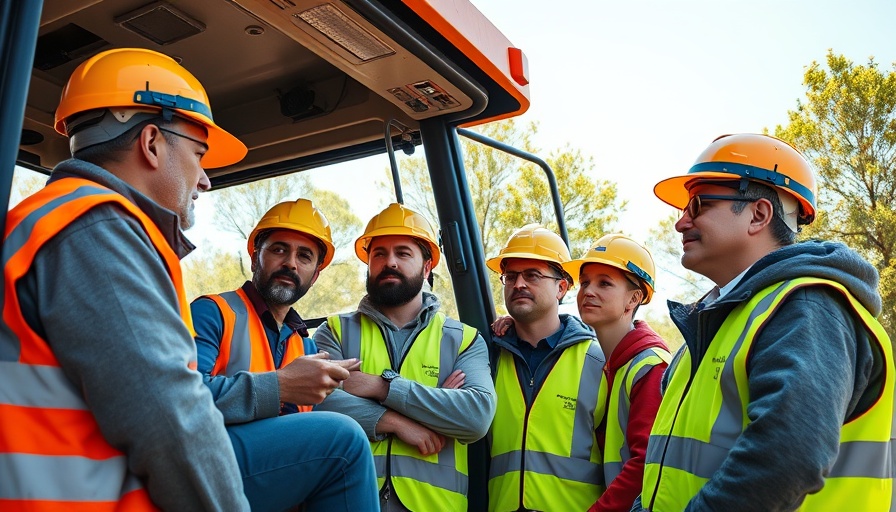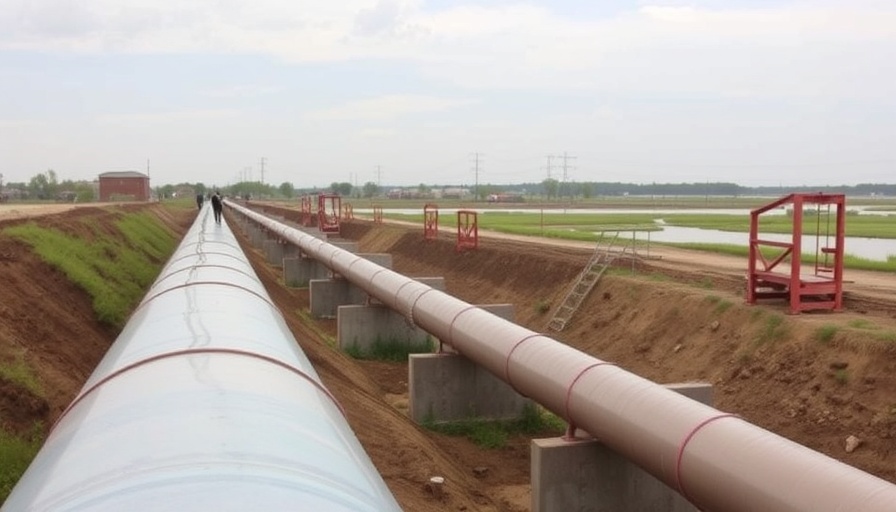
The Construction Industry Holds Its Breath: What's Next?
As we look towards March 2025, the construction industry in the Midwest is showing signs of resilience amidst cautious optimism. With the numerous economic challenges ranging from inflation battles to shifting consumer confidence, stakeholders are bracing for what’s next. Significant growth was noted in 2023, particularly in non-residential construction, with a reported rise in spending by 5%. However, forecasts suggest that 2025 will be pivotal as companies gear up for more substantial investments backed by federal infrastructure initiatives.
Shifting Dynamics in Construction Projects Across the Midwest
Major projects, such as the Trout Museum of Art in Appleton, Wisconsin, signify a renewed interest and commitment to infrastructure development. According to reports, this $38 million project reflects a trend towards multifaceted buildings that combine educational, artistic, and residential elements. Expected to open this fall, it represents a growing desire to invest in community-centered developments.
The uniqueness of this project lies not only in its financial commitment but also in its architectural design that accommodates various societal needs, including spaces for education and living, thereby promoting a holistic approach in urban development.
Benefits of Strategic Federal Investments in Infrastructure
The anticipated federal investments from legislation such as the Inflation Reduction Act (IRA) and the Infrastructure Investment and Jobs Act (IIJA) symbolize a significant shift in the sector's landscape. With proposed plans for nearly $17 million aimed at enhancing the EV charging network, the emphasis on sustainable and technology-enhanced infrastructure is increasingly evident. These initiatives not only bolster governmental support for contractors but also suggest a commitment to an evolving, future-ready construction landscape.
Challenges Facing the Workforce in the Midwest
While optimistic forecasts abound, the workforce remains a critical challenge for the construction industry. Reports indicate that over 90% of contractors face difficulties in hiring skilled labor. Shifts in labor trends have left many companies grappling with labor shortages, leading to a demand surge for skilled trade positions. The participation in registered apprenticeship programs has become a focus for stakeholders to build a more robust workforce that can withstand the ongoing demands of the construction sector.
Embracing Digital Transformation to Combat Supply Chain Issues
The construction sector, keenly aware of its supply chain struggles during the COVID pandemic, is now turning to digital solutions to mitigate these issues. Innovations in construction technology are paying dividends, aiding contractors in streamlining their operations. Implementing digital tools can also boost transparency within teams, improving communication and project management capabilities, which are essential in ensuring uninterrupted project flow and adherence to timelines.
Moving Forward: A Summary of the Community’s Needs
As 2025 approaches, it is evident that the Midwest construction enterprise is at a crossroads. The need for community-focused projects, efficient workforce development, and innovation in operations combines with a renewed federal commitment to infrastructure. The collaborative efforts of contractors, policymakers, and local stakeholders will underline the significant role of the construction industry in shaping prosperous communities in the region.
In conclusion, as we navigate through these changing times, staying informed about the industry dynamics will empower homeowners and contractors alike to build not just structures but also resilient communities.
 Add Row
Add Row  Add
Add 






Write A Comment